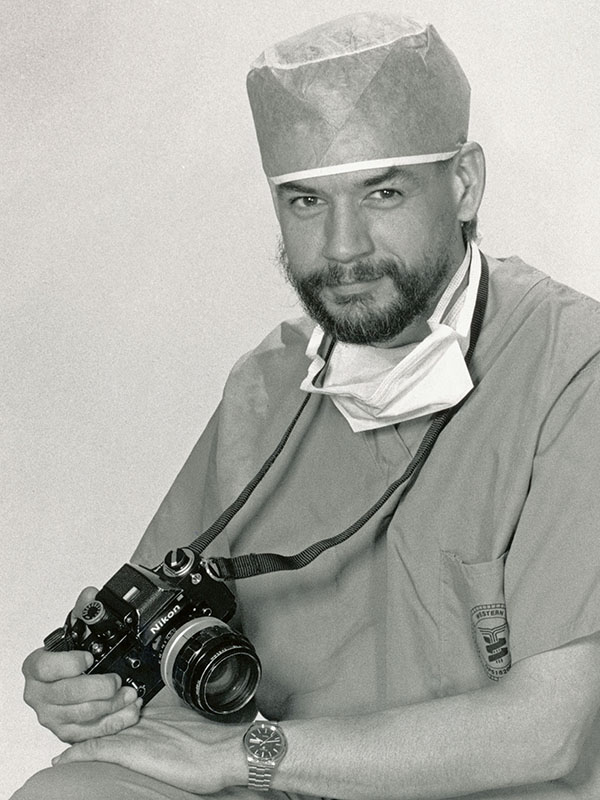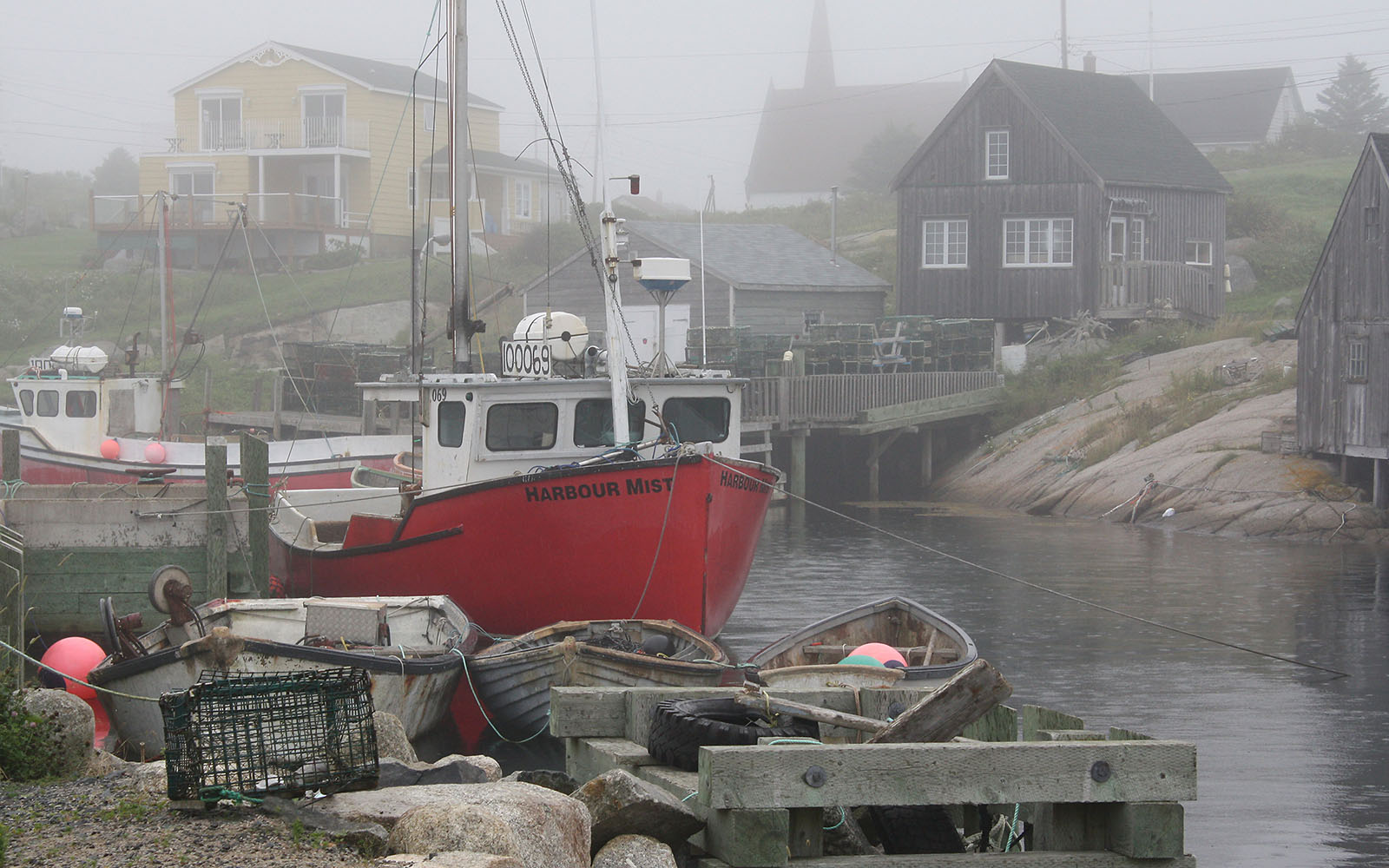Retired Member Profile - Alexander McDonald, RBP
Who or what inspired you to make photographs?
I was first inspired to do photography by my father. He was a keen family and vacation photographer and from observing and helping him, I discovered that for me, photography was a perfect blend of art and science.
Where did you get your training?
Much of my early experience occurred as a result of being an avid photographer as a teenager, doing photography for the high school yearbook and reading everything I could find on photography.
The owner of the local camera shop, Bert Hoferichter, MPA was an inspiration because he demonstrated what a successful photography business could look like. Bert was never shy about going all in to pursue his goals and in addition to other accomplishments he went on to be Director of the Photography Program at Humber College in Toronto.
After high school I studied photography at another local community college, and it was there that I happened to see an article in Canadian Photography magazine that would change my life. The article was titled “Jean Gauthier, First to Shoot a Heart Transplant”. From that article published in 1970, about a medical photographer in Montreal, I learned that the profession of medical photography existed and that one could be certified as a Registered Biological Photographer.
How did your work life begin? Any standout memories?
I started as an assistant photographer at St. Michael’s Hospital, Toronto, Canada in 1973. The department manager at that time was Alexander K. (Sandy) Collins, a graduate of the London School of Medical Photography. His extensive knowledge of medical photography provided an excellent resource for me as a new photographer. When a vacancy became available, I was promoted to Medical Photographer. Working in a Medical Photography department at a university affiliated teaching hospital afforded the opportunity to learn a wide variety of skills, and for the next eight years I learned most every facet of hospital photography such as clinical, surgical, public relations, developing specialized films, making prints for publications and making slides for lectures. In addition, there were opportunities to learn the audio-visual aspects of a teaching hospital by assisting the AV technician when help was needed in the lecture theatre.
 After eight years at St. Michael’s Hospital, an opportunity arose to become the Senior Medical Photographer at The Hospital for Sick Children, Toronto. A highlight of my time at Sick Kids as it is now known, was facial mapping for the craniofacial reconstruction team. Craniofacial surgeons specialize in the correction of skull shape abnormalities. Facial mapping required precise work because the skull had to be photographed from all sides and printed to life size. From the life size photograph, Alec Wright, an accomplished medical artist, and associate professor at the University of Toronto would draw a concept of what the child’s face should have looked like. This drawing, along with the life-size photograph provided a guide for the craniofacial surgeon to perform reconstructive surgery. Another high point occurred in 1984 when conjoined twins were flown from Burma to Toronto to be surgically separated at Sick Kids. One of my pre-op photographs of the twins was published as a double page spread in Life magazine, October 1984. During the 18-hour separation surgery I directed video coverage so that any of the fifty staff who were not needed in theatre could follow the progress.
After eight years at St. Michael’s Hospital, an opportunity arose to become the Senior Medical Photographer at The Hospital for Sick Children, Toronto. A highlight of my time at Sick Kids as it is now known, was facial mapping for the craniofacial reconstruction team. Craniofacial surgeons specialize in the correction of skull shape abnormalities. Facial mapping required precise work because the skull had to be photographed from all sides and printed to life size. From the life size photograph, Alec Wright, an accomplished medical artist, and associate professor at the University of Toronto would draw a concept of what the child’s face should have looked like. This drawing, along with the life-size photograph provided a guide for the craniofacial surgeon to perform reconstructive surgery. Another high point occurred in 1984 when conjoined twins were flown from Burma to Toronto to be surgically separated at Sick Kids. One of my pre-op photographs of the twins was published as a double page spread in Life magazine, October 1984. During the 18-hour separation surgery I directed video coverage so that any of the fifty staff who were not needed in theatre could follow the progress.
Later, while working at Toronto Western Hospital, my ambition to someday photograph a heart transplant came to fruition. That inspirational magazine article from long ago that kickstarted my career was now my reality, as I stood over the OR table photographing of the chest of a man who for a brief period had no heart. Because of the professionalism and trust between colleagues in the operating theatre, the atmosphere during the heart transplant was quite calm and almost routine.
Returning to St. Michael’s Hospital in1989, I began leading the transition from silver-based photography to digital imaging. In 2001 I became Manager of the Medical Media Centre. The department handled medical photography, videography, graphic art and audiovisual services for the hospital. In 2003 I received a Diploma in Health Care Administration from the Ontario Hospital Association.
During my 20 years of service at St Michael’s, there were many opportunities and challenges. One opportunity was designing a course of study for the first St. Michael's Hospital -Toronto Metropolitan University combined Medical Media Internship Program for fourth year Radio & Television Arts university students. I monitored the interns progress through study rotations and administered performance appraisals. When the government closed the nearby Wellesley Hospital, I merged Wellesley Instructional Media Services human and physical resources with St. Michael’s Hospital Medical Media Centre. The result was a stronger media service for St. Michael’s Hospital.
Any mentors?
James M Atkinson, FBPA, AIMB, ABIPP had a tremendous influence on the medical photography community of the Toronto area. Jim Atkinson was Manager of Media Services at Sunnybrook Hospital from the 1970s through the 1990s. Jim kept the BPA top of mind for anyone in the profession by hosting local meetings and being constantly enthusiastic about the importance of professionalism in medical photography.
When did you join BPA/BCA and what office, awards or certifications did you hold?
I joined the BPA in the 1980’s and, I was awarded my RBP in 1987 at the annual BPA meeting “Branching Out.” In Ann Arbor, Michigan.
My oral presentation, “Getting the Message Out” was published as an article in the Journal of Biological Photography in October 1987.
I was Treasurer of the Lake Ontario Chapter of the BPA from 1983 to1985, then in 1987 I began a two-year term as Chairman of the Lake Ontario Chapter of the BPA.
What has your retirement been like?
After retiring from St. Michael’s Hospital, I opened an independent photography and audiovisual service. I became certified as a Telemedicine Coordinator by the Ontario Telemedicine Network and worked facilitating telemedicine sessions at several suburban hospitals.
After stopping work, I spend my time chasing sunsets and autumn leaves searching for the next perfect photograph.
Lastly, what advice or wisdom would you give to someone wanting a career in any field of photography today.
Be curious about learning all that you can about your field of interest but keep a long-term goal in mind. Be patient and ready to the seize an opportunity when it appears.
 Wilkin's Walk © Alex McDonald
Wilkin's Walk © Alex McDonald

Peggy's Cove © Alex McDonald
